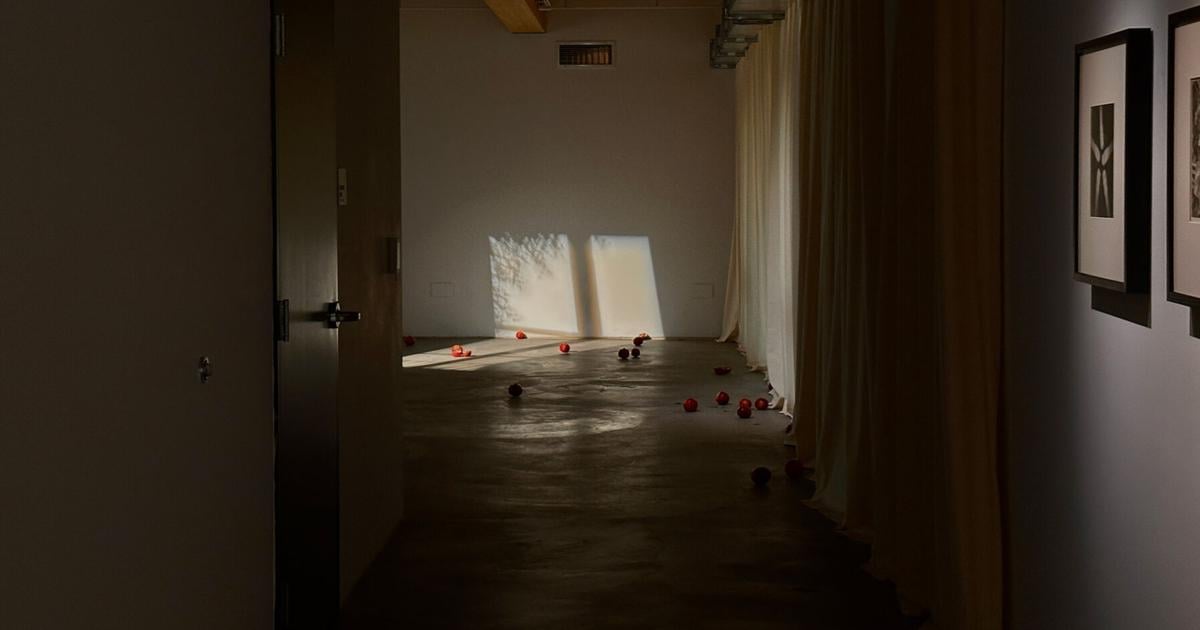The Wattis Institute for Contemporary Arts, the on-campus gallery and museum of The California College of the Arts, adapts the unmade screenplay of the late Spanish surrealist poet Federico García Lorca in a brand new exhibition. The exhibit, aptly titled “Viaje a la luna” after Lorca’s script by the same name, features historical and contemporary artworks that evoke the themes of the film’s story, Lorca’s life and remnants of his life under fascist rule.
Lorca rose to prominence in the 1920s alongside other notable Spanish avant-garde pioneers, including Salvador Dalí and Rafael Alberti. Lorca’s work gained recognition for its versatility and provocative nature, seeded through his poetry and stage plays. These range from surrealist works such as “Paisaje con dos tumbas y un perro asirio,” or “Landscape with Two Graves and an Assyrian Dog,” a dreamlike poem written to a friend, to realist stories about marginalized populations in Spain, such as his “Rural Trilogy” plays.
“Viaje a la luna” is Lorca’s capstone project, reconciling his identity as a gay man and leftist activist. However, the screenplay, named for the Coney Island rollercoaster entitled “A Trip to the Moon,” was never actualized into a film due to Lorca’s assassination amid the Spanish Civil War.
“Even though the film script is the anchor of the exhibition, (the exhibit is) really about the absence of the film,” said co-curator Diego Villalobos in conversation with The Daily Californian. “That suddenly opens the door to a lot of things, like Lorca’s time when he was alive, the politics of the 1920s and ’30s, the artists that were part of his community. That absence becomes very generative.”
The exhibition is adorned with multidisciplinary artworks from artists across the world, with some pieces by Lorca’s collaborators dating back to the early 20th century. Notable installations include photograms by Mexican artist Emilio Amero, presumed director of “Viaje a la luna” and Lorca’s rumored lover, as well as tactile surrealist sculptures by Swedish sculptor Nina Canell that allude to Lorca’s fascination with Coney Island. Several drawings by Lorca, which are thought to be self portraits dating back to his time living in New York in the late 1920s, are also featured.
Though little is known about the abstract meaning of the “Viaje a la luna” screenplay, all of the pieces displayed in the gallery reflect elements of Lorca’s political philosophy, personhood or artistic prerogatives.
“Lorca was an artist who, in his work and in his life, was just very unapologetic. He was a gay man, he dealt with a lot of socialist ideas, he was very much about championing people on the margins,” Villalobos said. “What (co-curator Rodrigo Ortiz Monasterio) and I wanted to capture with (the artworks) was to give viewers a sense of the history. What were these artists thinking at the time? What were the politics of the era? How do those politics reflect in the works that they were making?”
Some components of the installation focus on the practicalities of Lorca’s life. Across the gallery are fixtures of opaque white curtains, where projections of the only images taken on the set of “Viaje a la luna” before Lorca’s assassination are screened to a ghostly effect. The images, photographed by his friend Lola Álvarez Bravo, are paired with a superbly haunting light projection installment by Álvaro Urbano, which precisely emulate the look of moonlight pouring into Lorca’s bedroom window in his Spanish home.
Curtains are multifunctional to the gallery, both playing into themes of interiority and domesticity, which recur in Lorca’s work, and reminding the onlooker of the cinema and theater. This is a testament to Monasterio and Villalobos’ ability to emphasize mise-en-scène with consideration to the physical space. To that end, the gallery adapts many conventions of Lorca’s work and lifestyle: involvement with artistic collectives, artifice to emphasize surreality and absence.
“It’s ultimately like a memento mori,” Villalobos said. “It’s this reminder that we’re all going to die, and it’s a reminder of Lorca’s tragic fate, but there’s still something really beautiful. We’re contending with that void.”
“Viaje a la luna” closed at the Wattis Institute last weekend and will travel to the Centro Federico García Lorca this month in Lorca’s hometown of Granada, Spain.

